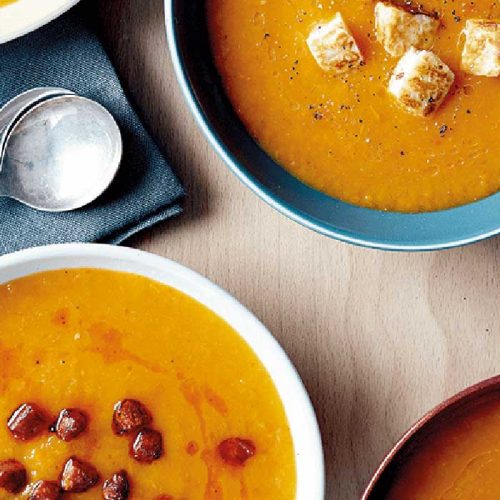
Are you one of approximately 60 million people worldwide who live with chronic pain? Then you’ll understand how debilitating it is, and how it affects nearly all activities of daily living. Healthy Food Guide Australia editor and dietitian Brooke Delfino explores the latest research in pain management.
From a scraped knee and occasional bump or burn to childbirth, bursts of pain are a normal part of life. Pain is your body’s way of telling you something needs attention, and helps to keep you safe. It’s a signal to the brain to stop, change your behaviour or investigate the cause.
Almost everyone knows what pain is, but everyone’s experience of pain can differ. Sometimes it’s short lived, like when you have a stubbed toe or headache. At other times, pain can be chronic and debilitating.
What is chronic pain?
“Chronic pain is pain that persists for longer than three months,” explains Carol Bennett, CEO of Painaustralia. “It can be intermittent or ongoing. For example, migraine pain comes and goes, whereas arthritic pain might be ongoing for a period of time, then stop and start up again,” she says.
People with chronic pain know how it interferes with basic day-to-day activities, including grocery shopping and preparing meals. “Chronic pain affects people at their highest point of productivity, which tends to be when people are in their peak working years,” says Bennett. In fact, 40 per cent of early retirement is due to chronic pain.
Despite the fact that chronic pain affects millions of people, access to pain management specialists varies depending on where you are and how affordable your healthcare system is, which means those living with chronic pain are often left waiting for extended periods to see a specialist.
What are the causes of chronic pain?
Chronic pain is a complex experience and the causes can vary. Some people get chronic pain as a result of injury or surgery, but in other instances the cause remains unknown. Some of the most common types of chronic pain include:
- Musculoskeletal pain, including back, shoulder and neck pain
- Headache and migraine
- Inflammation/joint pain, such as arthritis
- Endometriosis and pelvic pain
- Gut conditions such as IBS, ulcerative colitis and Crohn’s disease
- Nerve pain
- Fibromyalgia, which is a very complex condition causing widespread pain that is difficult to diagnose, manage and treat.
Chronic pain and inflammation: What’s the link?
Inflammation is your body’s immune response to help heal an injury or fight infection. When the injury heals or the infection goes away, inflammation normally goes away, too.
Sometimes, though, your immune system gets turned on and stays on after the ‘crisis’ has passed. Chronic pain occurs when your pain system has become overprotective, resulting in an inflamed and irritated nervous system.
The best ways to manage pain
Over-the-counter and prescription medications are commonly used to manage chronic pain, but a combination of treatments is most effective. “A holistic approach that incorporates medical, physical and psychological treatment is always recommended,” advises Bennett. This involves a multidisciplinary team that includes a GP, dietitian, physiotherapist and psychologist.
Unfortunately, this approach makes treating pain time-consuming and expensive. “Medication is provided in 70 per cent of GP visits for chronic pain, but only one in 100 people receive multidisciplinary care when they see a GP,” says Bennett. “And this is the problem we have. Medication is just one part of the puzzle, but it is still used as the go-to, when evidence demonstrates that it’s not particularly effective for long-term chronic pain management.”
1 Beneficial therapies
Bennett stresses that treating pain should not be a one-size-fits-all approach, and “what works best for one person may not work for another”. Evidence-based complementary therapies often lessen the need for medication and other more invasive procedures. They also allow people to take a more active role in their pain management. These therapies include:
TENS
Short for transcutaneous electrical nerve stimulation, TENS can be self-administered at home and on demand. It is a drug-free therapy that can be helpful in reducing many types of pain, including osteoarthritis, rheumatoid arthritis, sciatica and fibromyalgia.
Acupuncture
This 3000-year-old Chinese medicinal technique has been the subject of many studies, the results of which suggest it may help ease musculoskeletal pain such as osteoarthritis/knee pain, lower back and neck pain. Acupuncture may also reduce the frequency of headaches and help prevent migraines.
Sleep
While not a therapy, sleep is now recognised as one of the pillars of good health, along with nutrition and exercise. A good night’s rest will help you cope with pain, but this can be difficult to achieve for many people. A regular bedtime ritual and keeping your bedroom peaceful and relaxing can help set you up for a better night’s sleep.
Cannabis
While the evidence to support the efficacy of medicinal cannabis (also known as cannabidiol or CBD) is limited, anecdotal reports and small trials suggest it may have some benefit for chronic pain. According to advocacy group Painaustralia, low-dose CBD provides another option in the pain toolkit.
2 Eat to reduce inflammation
“The role nutrition plays in pain management can be just as important as mental and physical health,” says Bennett. “Dietary changes that impact inflammation can dramatically affect pain symptoms, in particular, for arthritis.”
The Mediterranean diet is well-researched for its anti-inflammatory benefits. This pattern of eating involves large amounts of fresh fruit, vegetables, nuts, whole grains, fish and healthy oils. Omega-3 fats are also known for their anti-inflammatory qualities. Research confirms that when people eat more of these healthy fats, they report reduced pain and use less pain medication. Additionally, eating foods high in omega-3s, along with plenty of fruit and vegetables, is linked to improved mood and better mental health.
On the other hand, a diet low in fresh fruit and veg, while being high in saturated fats (found in red meat, fried foods and pastries), trans fats (in takeaways and store-bought baked goods) and processed carbs (foods made from white flour and refined sugar) can promote inflammation.
3 Move it to lose it
Losing excess kilos can help relieve your pain, especially if it affects your joints. Adding extra movement throughout the day will help you lose weight in a gradual, sustained way, which will have long-term benefits for your chronic pain.
Research proves regular exercise can diminish pain long term by improving muscle tone, strength, and flexibility. “Many people believe that when they experience pain they need to stop, rest and take pills,” says Bennett.
Although resting for short periods can alleviate pain, too much rest may actually increase it and put you at greater risk of injury when you start moving again.
“Instead, focus on gentle movement, stretching and getting muscles moving for recovery,” advises Bennett.
Healthy shortcuts to help when you’re in pain
When it hurts to move, you don’t want to be carrying heavy groceries or standing up chopping vegetables. Try these five time-saving tips to make healthy eating a little easier:
- Buy cut meat and frozen veggies
- Get groceries delivered or ask friends and family to shop for you
- Cook extra portions and freeze leftovers for ‘bad’ days
- Add half a plate of colourful veg to your meals
- Keep healthy snacks on hand, such as nuts, yoghurt and fresh fruit.
Anti-inflammatory foods
Eat more of these healthy foods to help relieve pain:
- Salmon
- Berries
- Oranges
- Olive oil
- Spinach
- Walnuts
- Almonds
- Tomatoes
- Sardines
- Herbs and spices.
Article sources and references
- ABC News. 2020. Chronic pain patients ‘suffering unnecessarily’ call for urgent solution to national specialist shortage. Accessed April 2021https://www.abc.net.au/news/2020-11-10/national-pain-management-specialist-shortage-urgent-call/12840152
- Australian Pain Management Association. 2018. Understanding pain. Accessed April 2021https://www.painmanagement.org.au/resources/about-pain/understanding-pain.html
- Borigini M. 2011. Nutrition and chronic pain. Psychology Today. Accessed April 2021https://www.psychologytoday.com/us/blog/overcoming-pain/201104/nutrition-and-chronic-pain
- Calder et al. 2009. Inflammatory disease processes and interactions with nutrition. Br J Nutr. 101(1): S1–S45.https://pubmed.ncbi.nlm.nih.gov/19586558/
- Dragan et al. 2020. Dietary patterns and interventions to alleviate chronic pain. Nutr. 12(9): 2510.https://www.ncbi.nlm.nih.gov/pmc/articles/PMC7551034/
- Jacka FN & Berk M. 2012. Depression, diet and exercise. MJA Open. 1 Suppl 4: 21–23.https://www.mja.com.au/journal/2013/199/6/depression-diet-and-exercise
- NPS MedicineWise. 2020. Evidence summary — medicinal cannabis: chronic non-cancer pain.https://www.nps.org.au/assets/Medicinal-cannabis-evidence-summary-chronic-non-cancer-pain.pdf
- Wang et al. 2014. Fruit and vegetable consumption and mortality from all causes, cardiovascular disease, and cancer: systematic review and dose-response meta-analysis of prospective cohort studies. BMJ. 349: g4490.https://www.bmj.com/content/349/bmj.g4490
www.healthyfood.com










